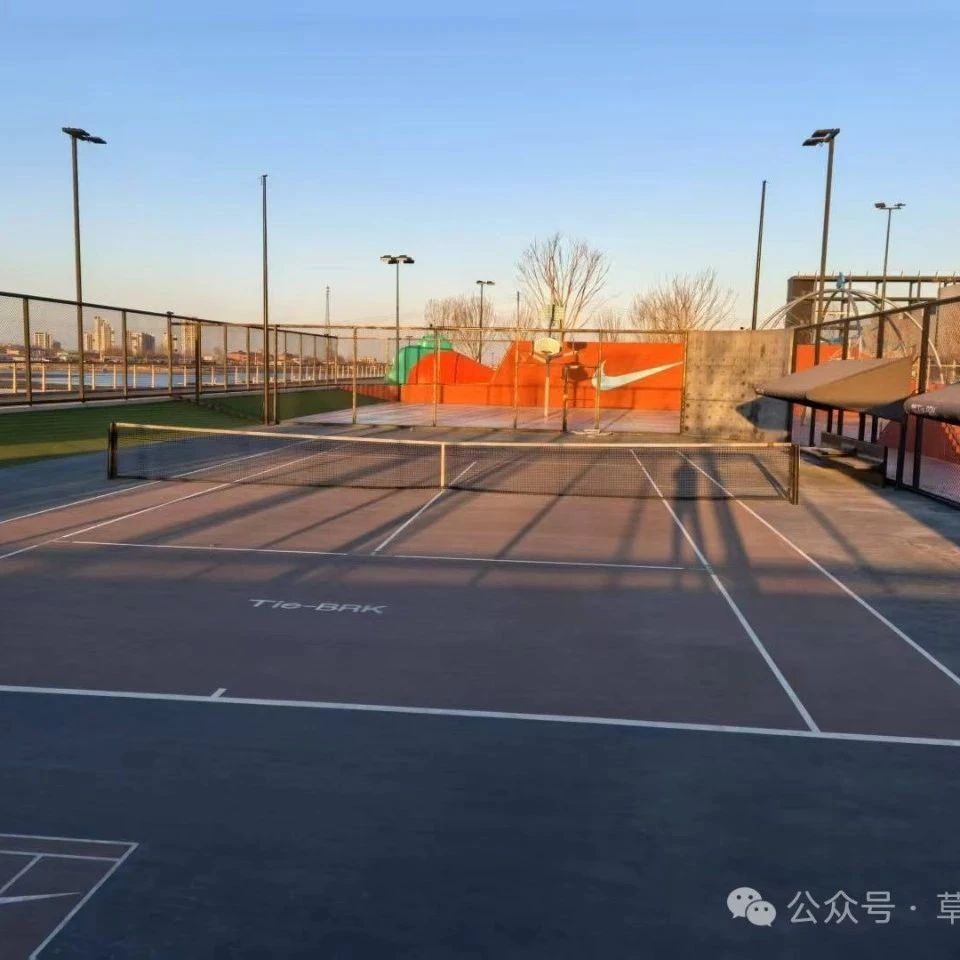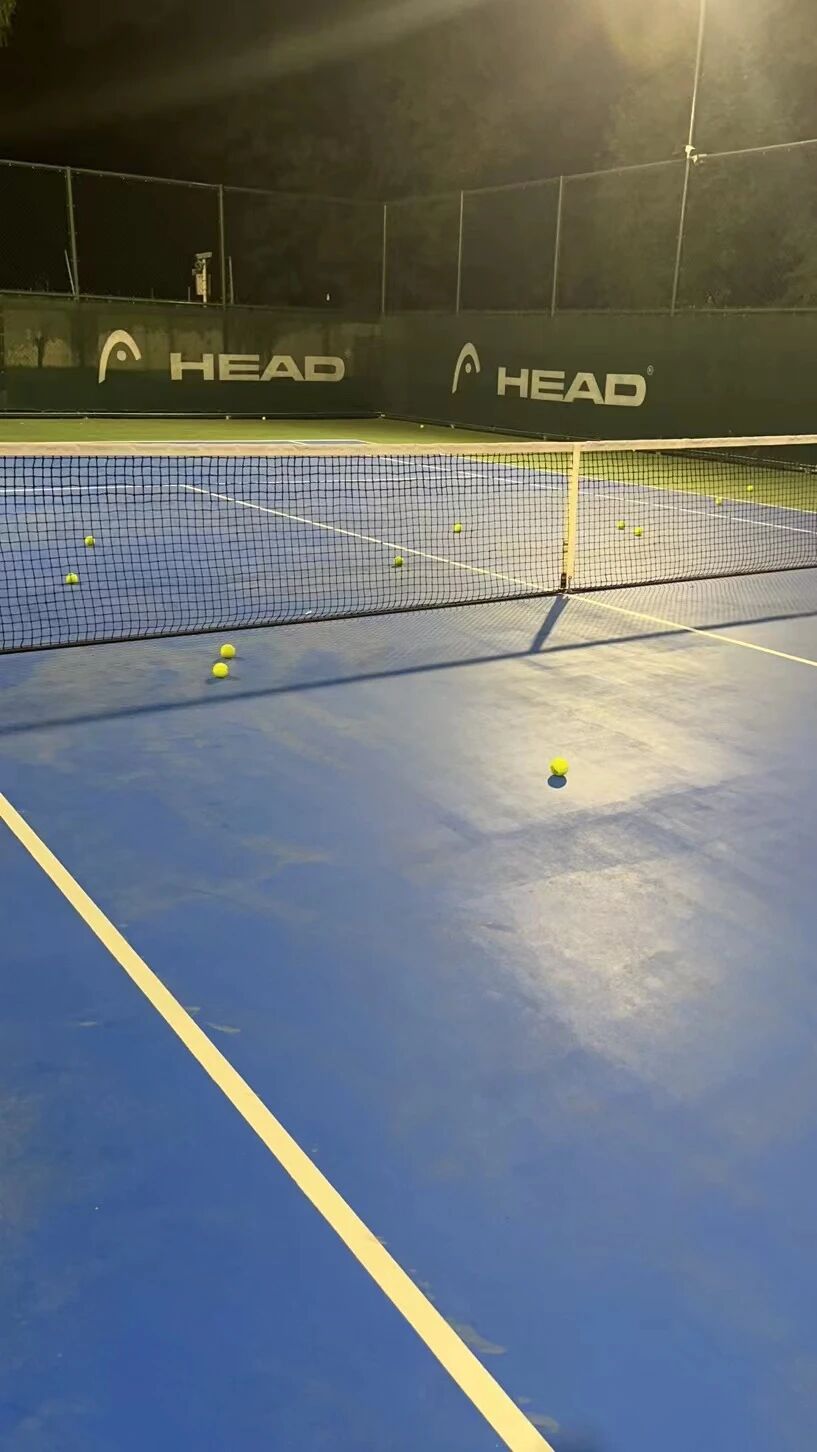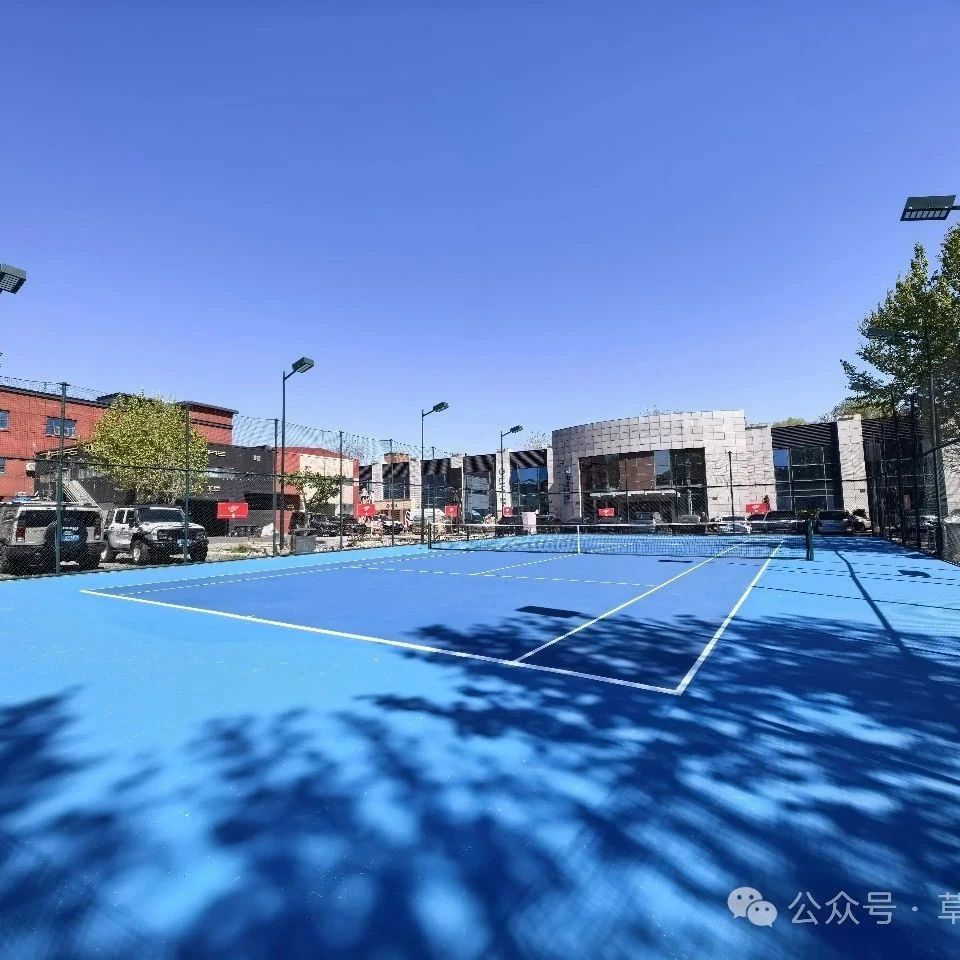The Truth About Tennis Kinetic Chain: Pushing Off the Ground Doesn’t Equal Generating Power—Actively pushing off can cause you to miss the perfect hitting point.
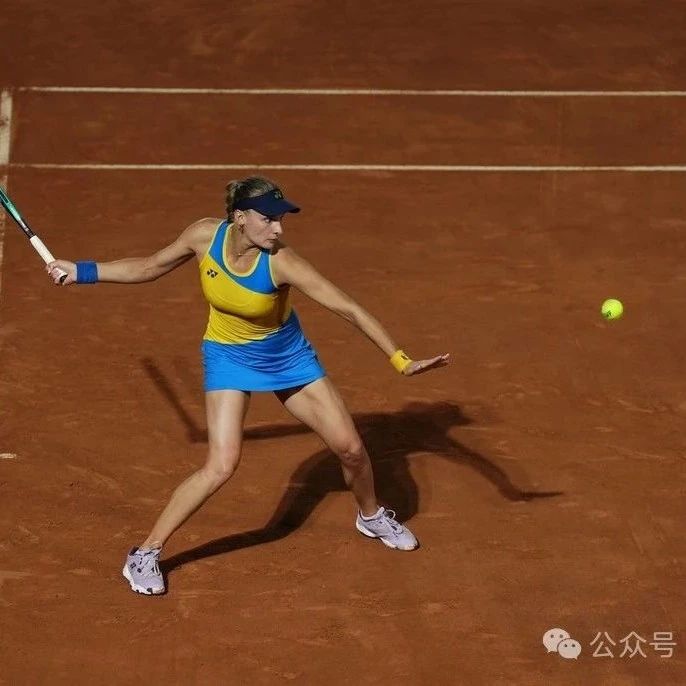
01
Background
“Push-off and Rotation”—a technique that feels both familiar and foreign to players.
During the process of refining the batting technique, it can never be emphasized enough how crucial "rotating the body" is—however, whether players can properly "push off the ground" ultimately determines the final outcome.
Through years of observation and teaching, the author has noticed that many players incorporate a "leg-kick" motion into their lower-body power generation during gameplay. This "leg-kick pattern" is often the main reason why advanced players miss the perfect impact point, resulting in awkward shots that catch the edge of the racket frame.
In the early stages of learning tennis, the "leg drive" motion can help players compensate for their ability to anticipate incoming shots, enhancing the topspin on their returns. However, as players improve their technical skills and opponents start delivering higher-quality returns, the reliance on the "leg drive" technique must be phased out—otherwise, meaningful progress will become impossible.
02
The difference between "pushing off the ground" and "kicking with the leg"
First, we need to recognize that whether players use a "leg-drive" or "ground-push" technique, they can still execute rotational movements of the torso or shoulders. Therefore, using the torso or shoulders as the primary markers for technical assessment is less effective. Instead, the author recommends selecting the knee joint and pelvis as more reliable indicators for evaluating technique.
What is "treading water"?
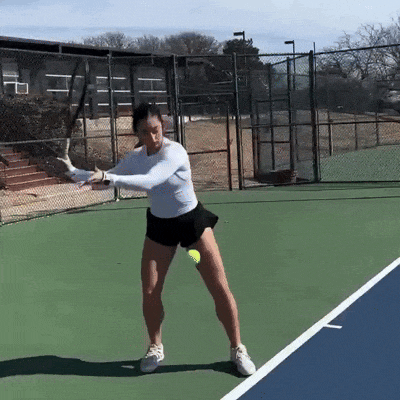
We’ll notice that as players prepare to hit the ball, their knee joints are flexed, but after impact, the knees extend—commonly described as "straightening the legs." (Both quadriceps muscles in the legs contract simultaneously to generate this movement.)
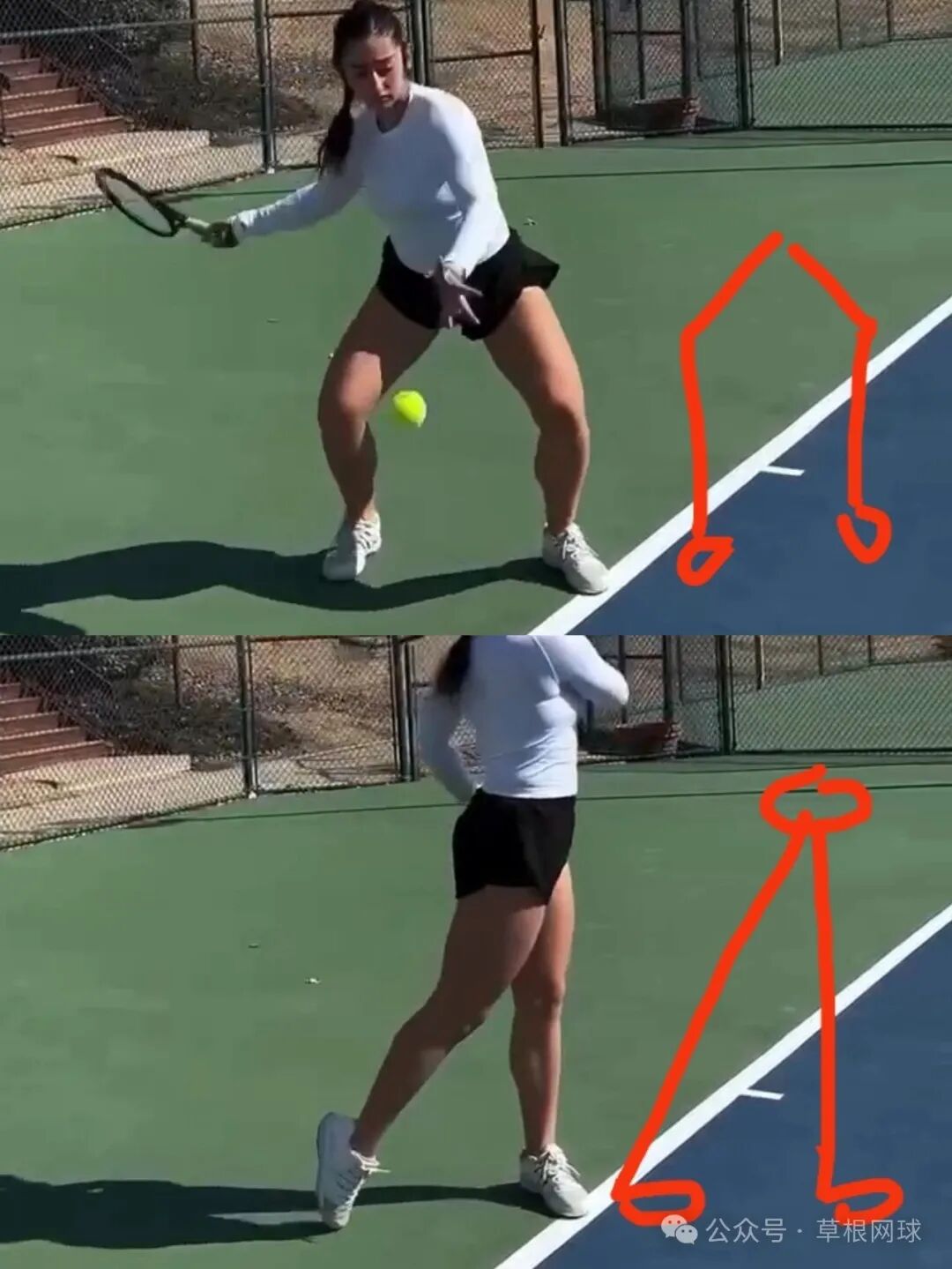
The knee joint bends during the swing preparation and straightens afterward.
During this process, the pelvis not only rotates in the horizontal plane but also moves up and down in the vertical plane, along with a slight forward translation. The up-and-down motion of the pelvis in the vertical plane is often the reason players miss the sweet spot during impact.
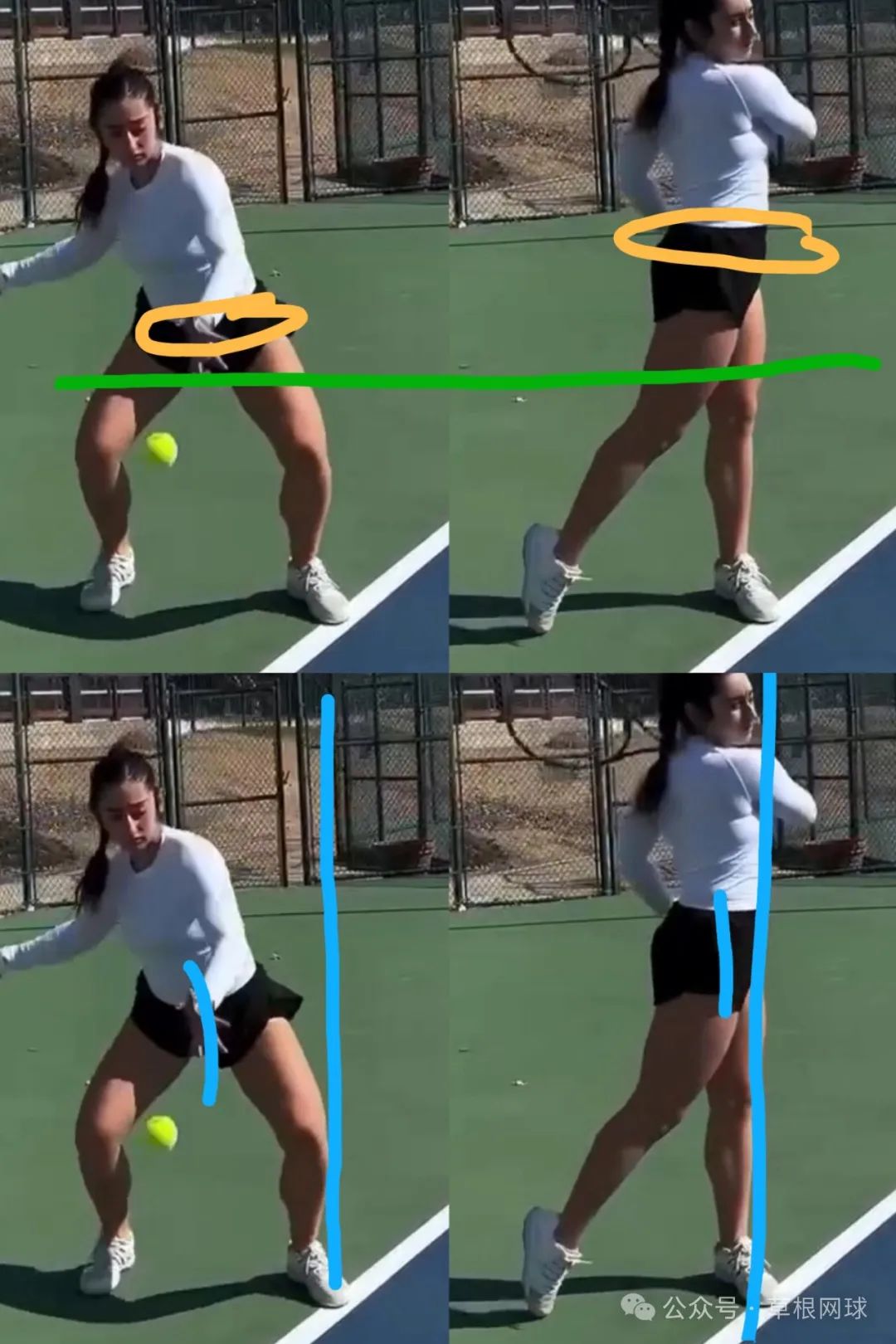
While the pelvis rotates horizontally,
It has significant up-and-down movements and clearly moves forward.
What is "pushing off the ground"?
The author believes that "pushing off the ground" means firmly planting your feet to enable coordinated movement of both hip joints, ensuring smooth rotation of the pelvic plane while minimizing vertical up-and-down motion. — This is precisely what it means to maintain a stable center of gravity and deliver a solid, balanced strike.
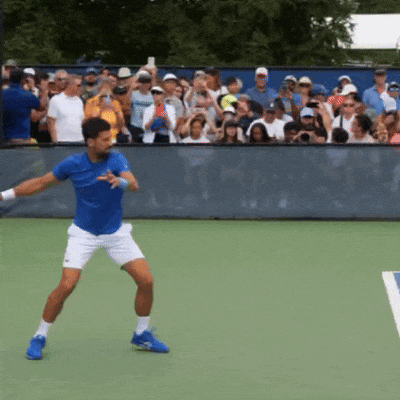
Let’s take a look at Djokovic’s forehand stroke motion. In comparison, throughout the entire sequence, Djokovic maintains a slight bend in both knee joints while his pelvis rotates smoothly—without any noticeable up-and-down movement. (The quadriceps in both legs remain largely inactive.)
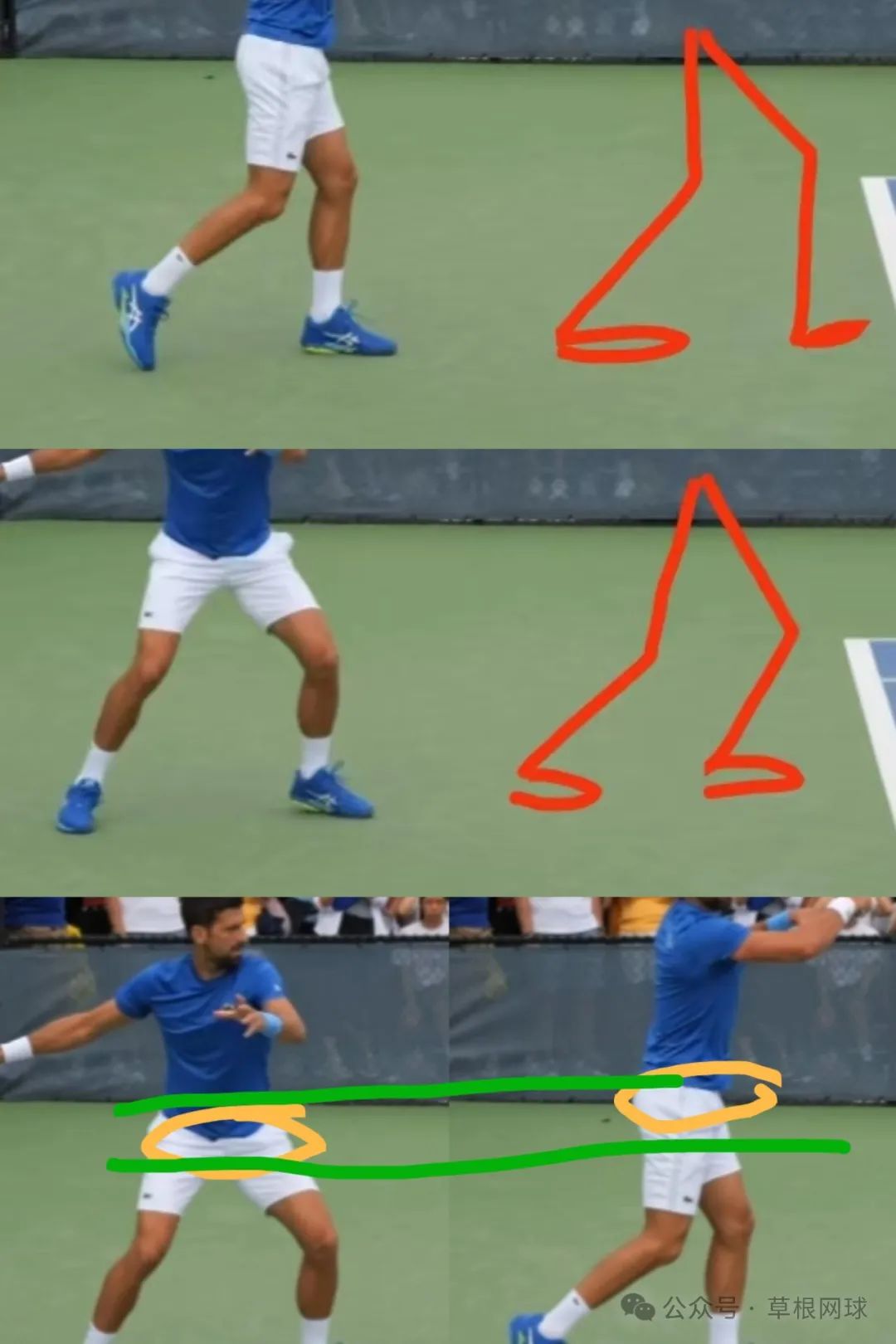
The remarkable aspect of a professional player's "ground push" motion is that, no matter how they adjust their pelvic position before hitting the ball, once they start swinging the racket forward, they consistently maintain a smooth, horizontal rotation of the pelvis—preventing any upward or downward movement. This requires incredibly strong core and hip-leg muscles to provide the necessary support.
Djokovic's mastery of rotational movements and timing in his shots is something amateur players can't quite grasp—but the ability to "push off the ground" and rotate the pelvis can be perfected simply through consistent practice.
03
Why do you miss the perfect hitting point?
On the surface, the sweet spot of a tennis racket typically measures 8 to 10 centimeters in diameter. Yet, with just one "leg drive"—a quick, forceful movement—the center of gravity rises directly by 20 to 30 centimeters. In fact, the height variation of the center of gravity matches the width of the racket itself, making it incredibly challenging to hit the sweet spot consistently.
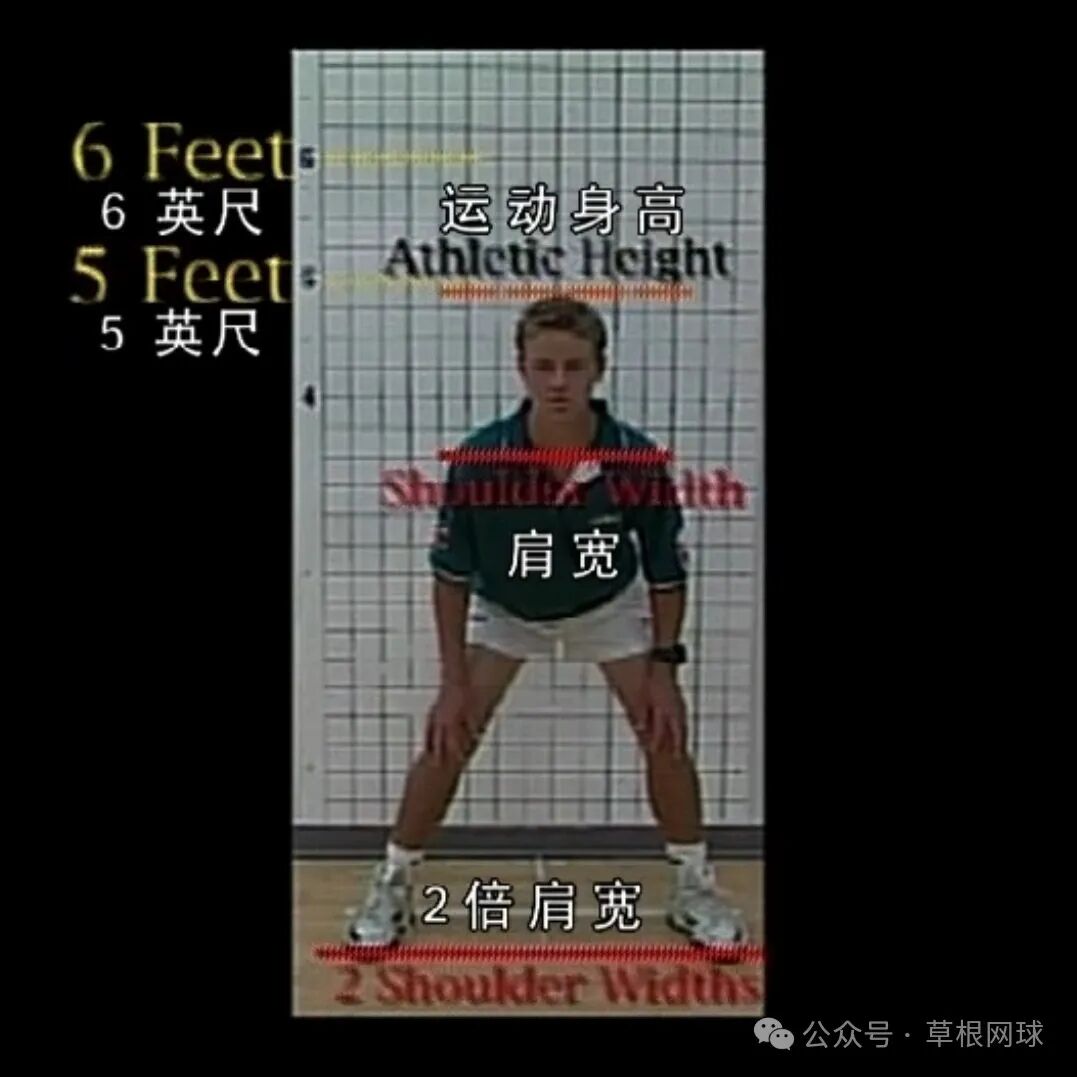
"Leg-drive" players may have already executed a proper drop in center of gravity and a well-timed lowering of the racquet head before swinging. Yet during the actual impact, they "drive with their legs"—resulting in the racquet face being higher than the incoming ball, causing the shot to strike the frame instead. Sometimes, it’s not that the drop is insufficient—it’s simply that the initiation of the leg drive happens too quickly.
To give you a vivid example, the "leg-kicking" player has essentially shifted from being like a land-based artillery piece to a ship-mounted cannon. — To hit the target, they must not only calculate the enemy’s speed and direction but also account for their own position and velocity. Under these demanding conditions, an amateur player’s ability to read the game is simply no match.
04
What is the fundamental issue?
The philosophy of the tennis kinetic chain: All muscles simultaneously fulfill both "explosive power" and "control"—but striving for maximum "explosive power" inevitably leads to a loss of some "control," while prioritizing strict "control" often comes at the expense of "explosive power."
Generally, a player's body muscles are divided at the pelvis: the lower-body muscles handle explosiveness, while the upper-body muscles focus on control.
We need explosive contractions in the core and hip-leg muscles to achieve a rapid hip rotation—essentially, pelvic rotation. In contrast, the "height and orientation of the hitting point" are controlled primarily by the shoulder, elbow, and wrist muscles, which is why we don’t observe "rapid" contractions in these three areas; instead, their primary function is to stabilize and maintain the overall hitting framework.
If players adjust the hitting height by using their lower limbs, the degree of quadriceps contraction will vary each time, leading to different heights of pelvic movement. This approach, however, can result in two serious consequences:
First, the unpredictable movements of the lower limbs make it more challenging for the upper limbs to maintain control—so even if the hitting point is correctly identified, an imbalance in the coordination between the upper and lower body can still cause a missed shot.
Second, under this approach, players inevitably end up exerting extra control over their lower limbs. Remember the philosophy of power generation? When you impose control, you naturally lose explosive power.
The essence of "kicking the legs" and missing the perfect hitting point is using the wrong power-generation pattern, artificially increasing the difficulty of the swing—and ultimately compromising the effectiveness of the hit.
05
Activate lower-body power-generation training
If a coach notices that a player exhibits a noticeable "leg-drive" motion during the swing, they should promptly implement progressive training exercises to correct it—this is where the author offers a starting point for discussion.
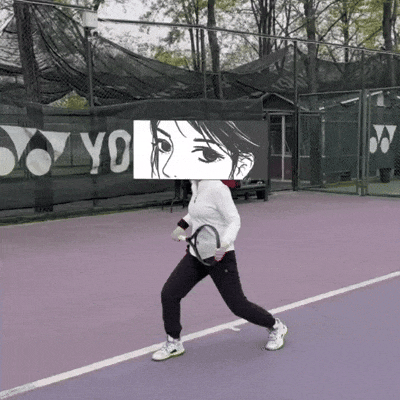
First, have the hold the racket horizontally in front of their abdomen, gripping it with both hands as close to the pelvis as possible—just enough so it doesn’t hinder your rotational movement. (The racket should be perpendicular to the baseline at the starting position.)
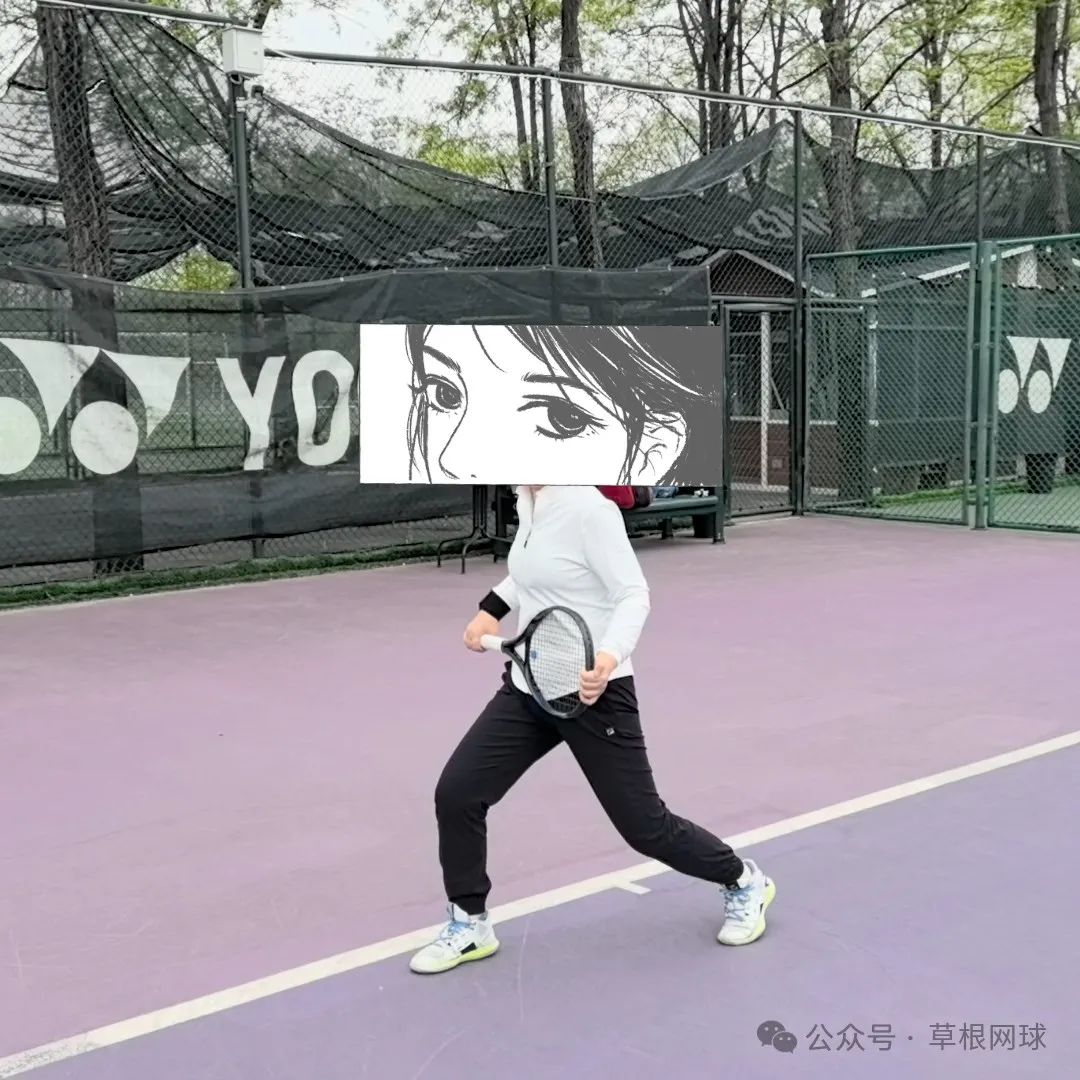
Starting position: Mid-level stance, with the racket held horizontally across the abdomen.
Second, the batting stance begins with a neutral position, which helps activate the dual-axis rotational pattern and reduces the extra mental effort students need to expend to maintain their balance.
Finally, the "hip-knee-ankle" enables the pelvis to rotate, positioning the racket parallel to the baseline. Remember to maintain balance and hold steady in the final position—avoid moving too quickly.
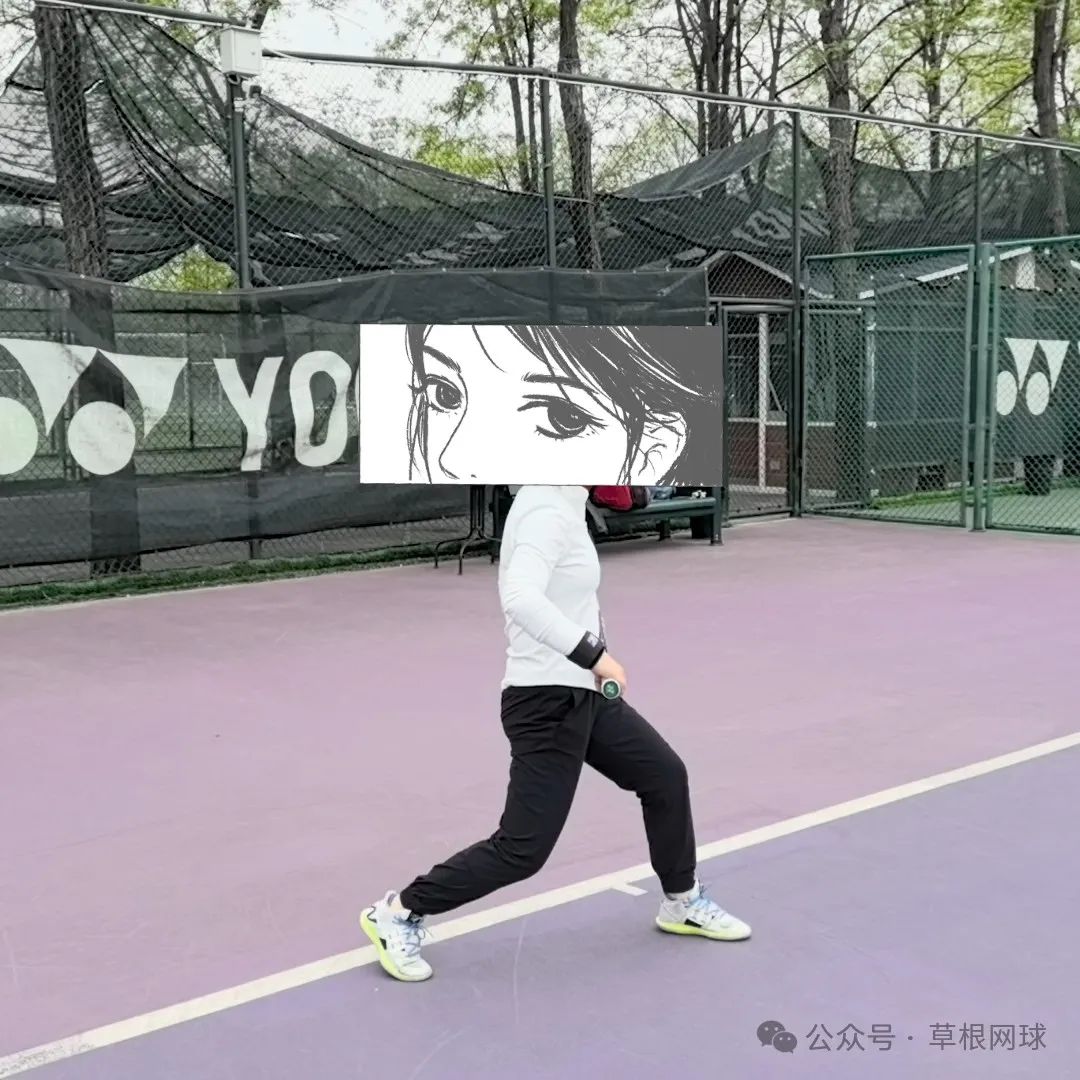
During the assessment of the player, determine whether there is a noticeable change in the angle of the knee joint and whether pelvic movement primarily involves horizontal rotation.
06
The Secret to Breaking Through in Tennis Techniques
Some movements are effective in the beginner stage, but they aren’t necessarily correct. For instance, the "leg kick" is highly effective when you’re just starting out—it can quickly boost the chances of a slow ball clearing the net.
If tennis technique is forced to prioritize results, players will eventually stop improving altogether.
The secret to advancing in tennis lies in not only achieving results but also understanding the methods behind them.
